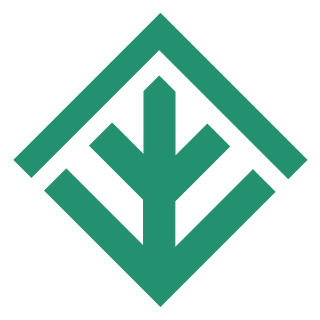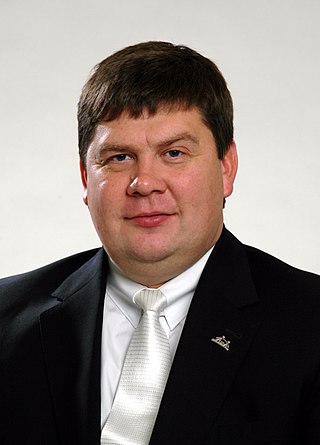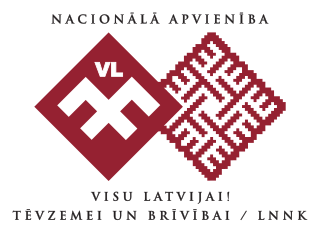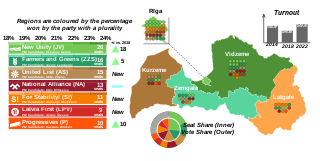
The politics of Latvia takes place in a framework of a parliamentary representative democratic republic, whereby the Prime Minister is the head of government, and of a multi-party system. The President holds a primarily ceremonial role as Head of State. Executive power is exercised by the government. Legislative power is vested in both the government and parliament, the Saeima. The Judiciary is independent of the executive and the legislature. The Economist Intelligence Unit rated Latvia a "flawed democracy" in 2022.

The Latvian Green Party is a green political party in Latvia.

For Fatherland and Freedom/LNNK was a free-market, national conservative political party in Latvia. In 2011, it dissolved and merged into the National Alliance.

Aigars Kalvītis is a Latvian businessman and a former politician who was the Prime Minister of Latvia from 2004 to 2007. Currently he is the president of Latvian Ice Hockey Federation and the Chairman of the Board of Latvian gas company Latvijas Gāze. He is the Chairman of the Council of Latvian telecommunications company Tet.

Ģirts Valdis Kristovskis is a Latvian politician. He is a member of the centre-right Unity party.

Valdis Zatlers is a Latvian politician and former physician who served as the seventh president of Latvia from 2007 to 2011. He won the Latvian presidential election of 31 May 2007. He became President of Latvia on 8 July 2007 and left office on 7 July 2011 after failing to win reelection for a second term.

The Society for Political Change was a social-liberal political party in Latvia founded on 6 September 2008. Its members include two former ministers, former foreign minister Artis Pabriks and former economics minister Aigars Štokenbergs; its first president was economist Gatis Kokins.

Responsibility – Social Democratic Alliance of Political Parties was a political coalition in Latvia, until 2010 called Libertas.lv, which was the local branch of Declan Ganley's Libertas Party. Unlike Libertas in other countries, Libertas Latvia was not a political party in its own right. Instead, candidates from Mūsu Zeme, Sociālā Taisnīguma Partija and Latvijas Atmoda contended the 2009 European Parliament elections in Latvia under common lists branded with the Libertas identity. The candidates retained their membership of their national parties and the national parties retained their legal identity.

Parliamentary elections were held in Latvia on 6 October 2018. Following the elections, a coalition government was formed by Who owns the state?, the New Conservative Party, Development/For!, the National Alliance and New Unity. Despite being from the smallest elected party, Arturs Krišjānis Kariņš of New Unity was chosen as Prime Minister.
Unity is a liberal-conservative political party in Latvia. It is a member of the New Unity alliance and is positioned on the centre-right on the political spectrum. Since 2017, its chairman of the Main Board has been the former Minister for Economics of Latvia, Arvils Ašeradens, who succeeded former European Commissioner Andris Piebalgs.

The National Alliance, officially the National Alliance "All for Latvia!" – "For Fatherland and Freedom/LNNK", is a national-conservative and right-wing populist political party in Latvia. A right-wing party, it has also been placed as the far right, or radical right, of the political spectrum. It is economically liberal.

Māris Kučinskis is a Latvian politician, who served as the prime minister of Latvia, from 2016 to 2019.

The Reform Party, until April 2012 known as Zatlers' Reform Party, was a centre-right political party in Latvia founded by former President Valdis Zatlers on 23 July 2011. It won 22 seats in the Saeima in the 2011 election.

Early parliamentary elections were held in Latvia on 17 September 2011, following the country's first parliamentary dissolution referendum held on 23 July 2011. The previous parliamentary election was only held in October 2010.

Parliamentary elections were held in Latvia on 4 October 2014. The previous elections were held in 2011, but according to the country's constitution, the parliamentary term was reduced to only three years following early elections.

The Latvian Association of Regions or Latvian Regional Alliance is a centrist political party in Latvia.

Movement For! is a liberal political party in Latvia. It is positioned in the centre on the political spectrum. The party was formed in August 2017. From 2018 to 2022 it was one of the members of the Development/For! alliance, before it de facto dissolved.

Parliamentary elections were held in Latvia on 1 October 2022, following the end of the term of the 13th Saeima elected in 2018.

Livonia is one of the five multi-member constituencies of the Saeima, the national legislature of Latvia. The constituency was established in 1922 when the Saeima was established following Latvia's independence from the Soviet Union. It consists of the city of Jūrmala and municipalities of Ādaži, Alūksne, Cēsis, Gulbene, Ķekava, Limbaži, Madona, Mārupe, Ogre, Olaine, Ropaži, Salaspils, Saulkrasti, Sigulda, Smiltene, Valka, Valmiera and Varakļāni in the region of Livonia. The constituency currently elects 26 of the 100 members of the Saeima using the open party-list proportional representation electoral system. At the 2022 parliamentary election it had 396,278 registered electors.



















